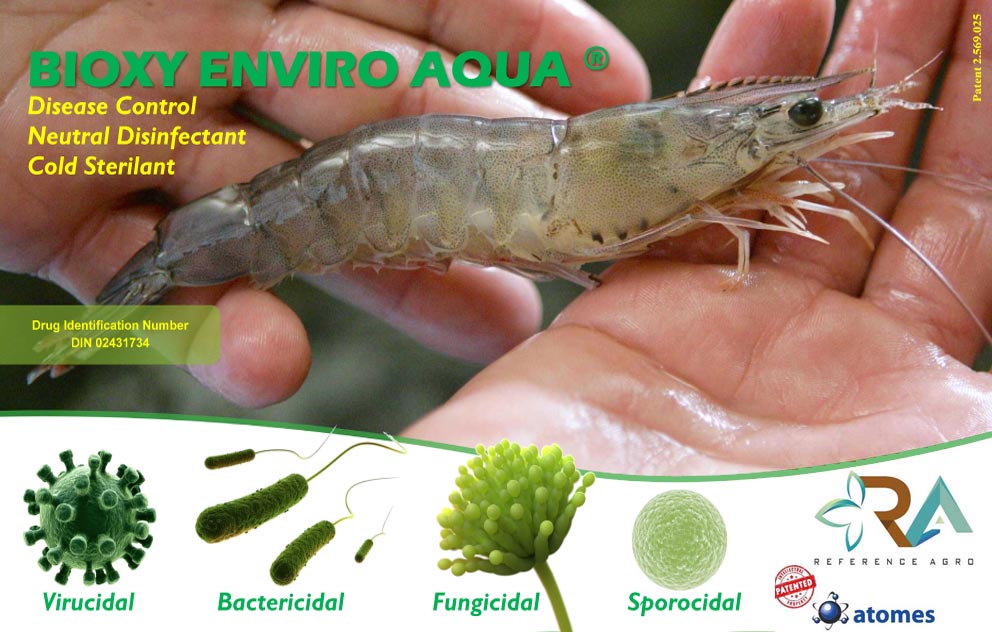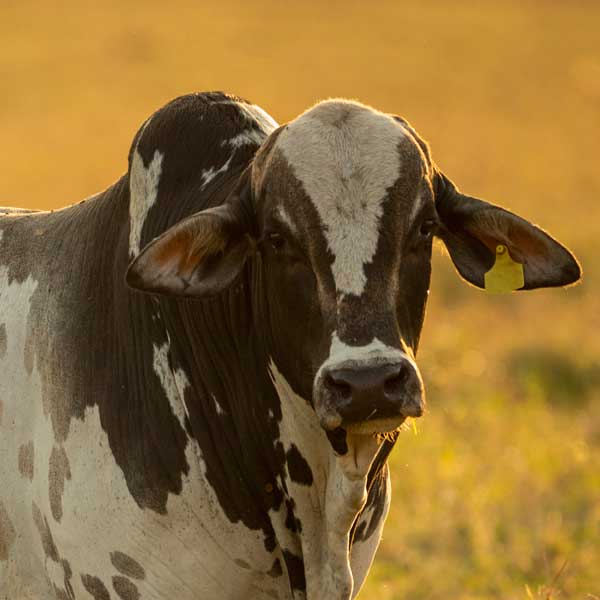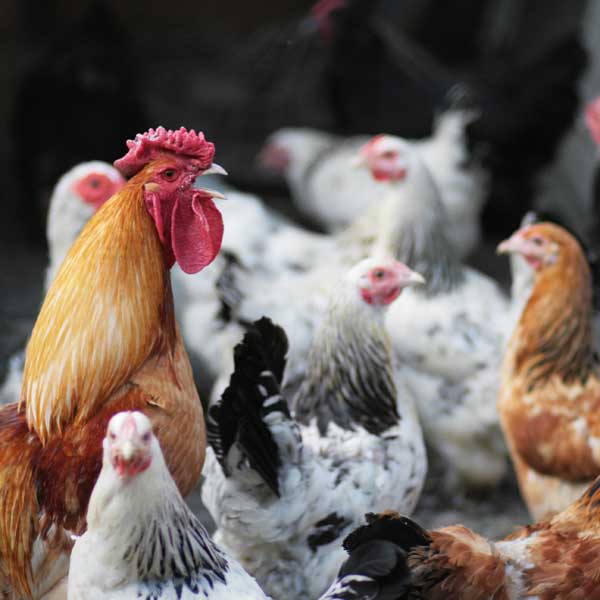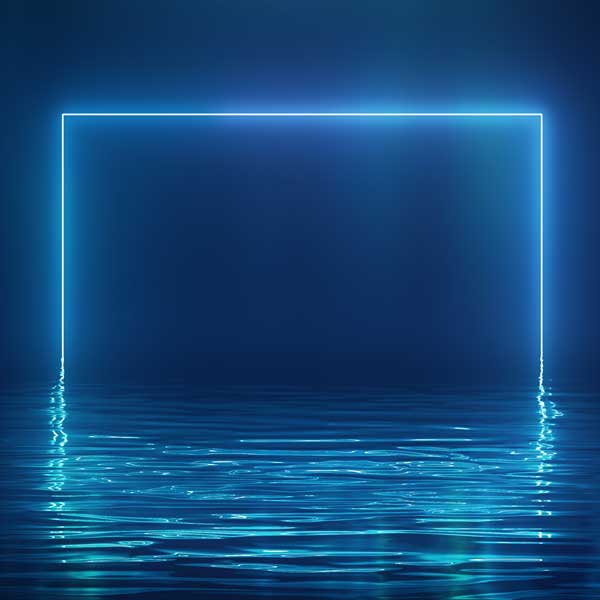
BIOXY ENVIRO AQUA
NEUTRAL DISINFECTANT, COLD STERILIZER
Problem
Aquaculture is a fast-growing industry that currently supplies almost half of the fish used for human consumption worldwide. Intensive and semi-intensive treatments are used to produce large volumes of fish, but disease outbreaks often occur. These disease outbreaks are mainly caused by bacteria and viruses. Luminous vibriosis is a shrimp disease caused by bacterial infection by Vibrio species, which causes huge economic losses as a result of massive shrimp deaths in the shrimp industry. The use of antibiotics to control Vibrio is not permitted in shrimp farming in the United States and therefore it is necessary to develop an alternative method of pathogen control for shrimp production.
TOP VIBRIO
- Vibrio alginolyticus
- Vibrio cholera
- Vibrio harveyi
- Vibrio parahaemolyticus
- Vibrio vulnificus
Salmonella is not generally considered to be a problem in wild offshore production unless contamination occurs after harvest . In 1998, the U.S. Food and Drug Administration (FDA) analyzed both wild and aquacultured seafood and found that aquacultured seafood contained more Salmonella than wild-caught seafood. In addition, Salmonella occurs in 25% of the sediments in shrimp-growing ponds.
White spot syndrome virus (WSSV) has a worldwide distribution and is considered one of the most pathogenic and destructive viruses in the shrimp industry. However, there is currently no treatment to interfere with the uncontrolled emergence and spread of the disease.
Parvoviruses Penaeus stylirostris densovirus (PstDNV), a pathogen of Penaeid shrimp, causes significant damage to farm and wild shrimp populations. Penaeus monodon densovirus (PmDNV), formerly known as Hepatopancreatic Parvo-like Virus (HPV) Disease. Penaeus monodon nucleopolydydrovirus (PemoNPV), formerly known as Monodon Baculovirus (MBV) Disease.
Taura syndrome (TS) is a shrimp virus disease caused by infection with Taura syndrome virus (TSV). TSV can cause significant disease outbreaks. TS has three distinct phases: acute, transitional, and chronic. In the acute phase of the disease, pathognomonic lesions are typically found in the histological parts of the cuticular epithelium, whereas in the changing and chronic phases of the disease, pathognomonic lesions are absent. Therefore, molecular and antibody-based methods are required for TSV detection and diagnosis.
Yellow_Head Shrimp Disease, Yellow-head virus (YHV), Yellow-head baculovirus (YBV), Shrimp will be exposed to acute epizootics with high cumulative mortality that can reach 100% within 3-5 days after clinical symptoms appear.
Yellow-head baculovirus Disease (YHDBV). The infection is transmitted horizontally. Tiger shrimp postlarvae (PL) 15 were found to be resistant to infection, while those at PL 20-25 stages and juveniles growing to about erin were highly susceptible to infection.
Infectious Myonecrosis Virus (IMNV) Disease : It is an RNA virus that progresses slowly and causes a cumulative mortality of up to 70%.
Larvae mycosis, Fungal Disease, Lagenidium or Cyrolipidium Disease Large, septate-free, highly branched fungal mycelia, disseminated throughout the body and appendages, replacing all tissue. The branches of the mycelium may protrude above the cuticle. Epizootics develop within 2-3 days; always fatal.
Unique & Patented Biotechnology-based, Non-Toxic, Non-Corrosive, Non-Carcinogenic, Eco-Friendly, Biodegradable, No Rinse Food Contact Certified Chemical
BIOXY ENVIRO ® is powder, when dissolved in water it forms three active disinfectants at neutral pH making it safe for users; Peroxy-acetic agent, hydrogen peroxide and two quaternary chains of the fourth generation.
BIOXY ENVIRO ®Powder degrades quickly and leaves no residue in the environment, in addition, there is no microbial resistance.
BIOXY ENVIRO ® is a champion against a broad spectrum of microorganisms. It is also safe and effective in the presence of biofilm, dirt and other debris.
BIOXY ENVIRO can replace glutaraldehyde, aldehyde and chlorine-based toxic and corrosive products with its environmentally friendly and safe formula.
BIOXY ENVIRO ® is almost odourless, proving to be the perfect solution for user safety thanks to its neutral pH.
Features & Benefits
|
|
Application Method
I. GENERAL PROTECTION
Use BIOXY ENVIRO ® at a concentration of 1 ppm daily. Prepare 1% to 5% solution. Mix and wait for 15 minutes before applying to activate the product. After 15 minutes, spread the equivalent of 1 ppm of product. 1 Kg of BIOXY ENVIRO ® 1000 000 Liters or 1000 m3 of water.
II. TREATMENT FOR SPECIAL 24 HOURS WITH DISEASE
| Disease | Pathogen | Application Rate | Equivalent |
| White Spot Syndrome | White spot syndrome virus (WSSV) | 4 ppm | 4 kg / 1000 m3 water |
| Taura Syndrome | Taura syndrome virus (TSV) | 0.5 ppm | 0.5 kg / 1000 m3 water |
| Parvoviruses | Penaeus monodon densovirus (PmDNV) | 3 ppm | 3 kg / 1000 m3 water |
| Parvoviruses | Penaeus stylirostris densovirus (PstDNV) | 3 ppm | 3 kg / 1000 m3 water |
| Parvoviruses | Penaeus monodon nucleopoly-hedrovirus (PemoNPV) | 3 ppm | 3 kg / 1000 m3 water |
| Yellow-head Shrimp Disease | Yellow-head virus (YHV), Yellow-head baculovirus (YBV), Yellow-head disease baculovirus (YHDBV) | 1 ppm | 1 kg / 1000 m3 water |
| Infectious Myonecrosis | Infectious Myonecrosis Virus (IMNV) | 2 ppm | 2 kg / 1000 m3 water |
| Vibriosis | Vibrio alginolyticus Vibrio cholera Vibrio vulnificus |
2 ppm | 2 kg / 1000 m3 water |
| Luminescent Vibriosis Disease | Vibrio harveyi | 2 ppm | 2 kg / 1000 m3 water |
| Premature Death Syndrome Acute Hepatopancreatic Necrosis Syndrome (AHPNS) |
Vibrio parahaemolyticus | 5 ppm | 5 kg / 1000 m3 water |




